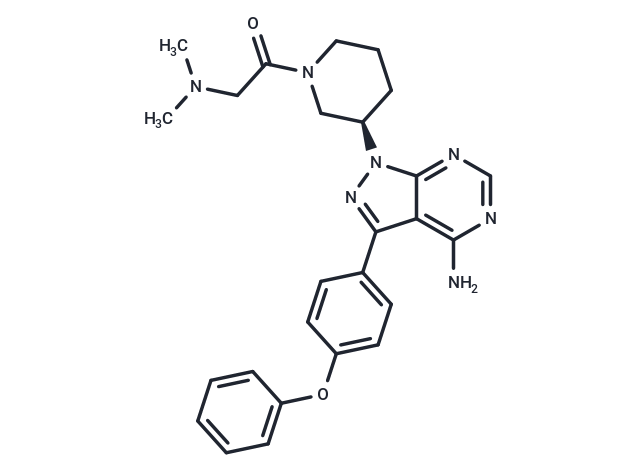Shopping Cart
Remove All Your shopping cart is currently empty
Your shopping cart is currently empty
CHMFL-FLT3-122 is a potent and orally available FLT3 kinase inhibitor used to treat FLT3-ITD positive acute myeloid leukemia. CHMFL-FLT3-122 significantly suppressed the tumor growth in MV4-11 cell inoculated xenograft model (50 mg/kg) without exhibiting obvious toxicity in vivo.

| Pack Size | Price | USA Warehouse | Global Warehouse | Quantity |
|---|---|---|---|---|
| 1 mg | $68 | In Stock | In Stock | |
| 5 mg | $167 | In Stock | In Stock | |
| 10 mg | $248 | In Stock | In Stock | |
| 25 mg | $412 | In Stock | In Stock |
| Description | CHMFL-FLT3-122 is a potent and orally available FLT3 kinase inhibitor used to treat FLT3-ITD positive acute myeloid leukemia. CHMFL-FLT3-122 significantly suppressed the tumor growth in MV4-11 cell inoculated xenograft model (50 mg/kg) without exhibiting obvious toxicity in vivo. |
| Synonyms | CHMFLFLT3122, CHMFL FLT3 122 |
| Molecular Weight | 471.55 |
| Formula | C26H29N7O2 |
| Cas No. | 1839150-56-9 |
| Smiles | NC1=C2C(N(N=C2C3=CC=C(OC4=CC=CC=C4)C=C3)[C@H]5CN(C(CN(C)C)=O)CCC5)=NC=N1 |
| Relative Density. | 1.33 g/cm3 (Predicted) |
| Storage | Powder: -20°C for 3 years | In solvent: -80°C for 1 year | Shipping with blue ice/Shipping at ambient temperature. | |||||||||||||||||||||||||||||||||||
| Solubility Information | 1eq. HCl: 90 mg/mL (190.86 mM), Sonication is recommended. DMSO: 90 mg/mL (190.86 mM), Sonication is recommended. | |||||||||||||||||||||||||||||||||||
Solution Preparation Table | ||||||||||||||||||||||||||||||||||||
1eq. HCl/DMSO
| ||||||||||||||||||||||||||||||||||||
| Size | Quantity | Unit Price | Amount | Operation |
|---|

Copyright © 2015-2025 TargetMol Chemicals Inc. All Rights Reserved.